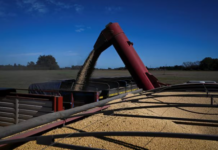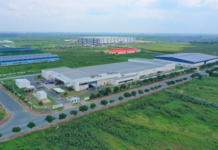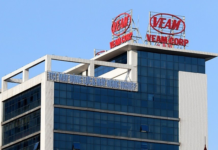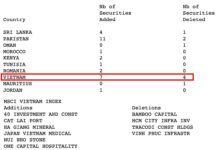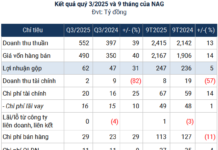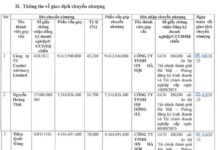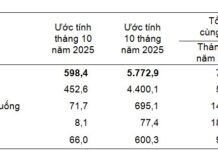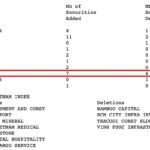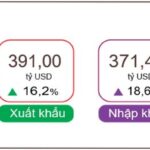The Ho Chi Minh City Department of Construction has announced restrictions on inland waterway traffic along the Rach Ong Lon 2 canal (in Hiep Phuoc Commune, Ho Chi Minh City) to facilitate the demolition of the old Long Kiểng Bridge, part of the Long Kiểng Bridge construction project.

The 50-year-old Long Kiểng Bridge, severely deteriorated over time.
The demolition process will be divided into two phases: removing piers and bridge spans outside the navigation channel. During construction, the contractor will install a buoy system with signal lights for nighttime operation to ensure waterway safety.
Phase 1 involves demolishing spans MT1-T1 (N1), T1-T2 (N2), and piers T1 and T2, taking 25 days. Phase 2 includes spans T3-T4, T4-T5, T5-MT6, and piers T3, T4, T5, lasting 30 days. The total demolition period is expected to be 55 days, ending on December 21, 2025.
The Department of Construction urges watercraft to strictly follow safety signals, maintain vigilance, and monitor updates on public media channels.
Additionally, the department requests media outlets, transport companies, local authorities, and relevant agencies to collaborate in informing residents and vessel owners to comply with regulations during construction.
On September 8, 2023, after over two decades of anticipation, the Long Kiểng Bridge in Nha Be Commune, Ho Chi Minh City, officially opened to traffic, marking the end of a nearly 25-year-long journey.
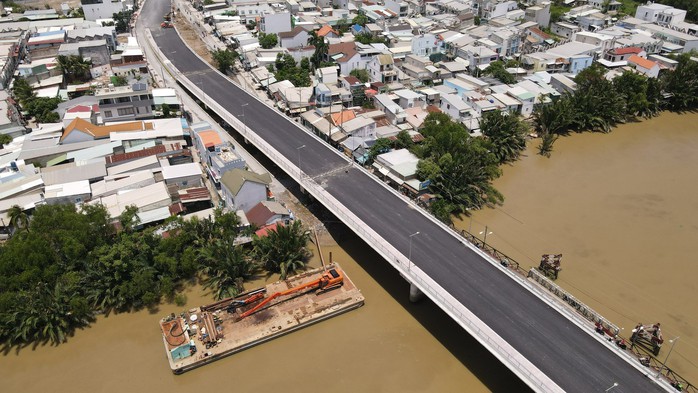
The new Long Kiểng Bridge ready for inauguration.
Approved in 2001 by the Ho Chi Minh City People’s Committee, the Long Kiểng Bridge project spans 318 meters, with a width of 15 meters and a total investment of 589 billion VND. However, the project faced numerous delays, particularly due to land clearance issues, halting progress for 20 years.
In August 2018, after the first 25 households handed over their land, construction began. After a year, the contractor completed 7 piers (40% of the work) but halted due to pending land clearance for other sections.
From 2020, with the Ho Chi Minh City People’s Committee’s decisive leadership, agencies resolved issues and persuaded the remaining 103 households to voluntarily hand over land without forced eviction. With full land acquisition by September 2022, the project accelerated, completing three months ahead of schedule and opening on September 8, 2023.
The 22-year journey of the Long Kiểng Bridge reflects the resilience of authorities and residents, offering valuable lessons in land clearance—a common challenge for infrastructure projects in Ho Chi Minh City today.
Proposed Interim Fee Collection for Red Book Issuance in HCMC Post-Merger
For properties in Ho Chi Minh City, the fee for issuing the Certificate of Land Use Rights and Ownership of Houses (Pink Book) is directly collected by the Ho Chi Minh City Department of Agriculture and Environment and submitted to the state budget. In contrast, for former provinces of Binh Duong and Ba Ria – Vung Tau, the fee is collected and managed by the People’s Committees of wards and communes.
High-Speed Rail Route Adjustment: Connecting Ho Chi Minh City Center to Can Gio
The high-speed rail line connecting downtown Ho Chi Minh City to Can Gio will originate from the Ben Thanh Market area, rather than the previously proposed Tan Thuan Ward (former District 7).
Ho Chi Minh City Supports Relocating the Starting Point of the High-Speed Rail Line HCMC – Can Gio to Ben Thanh as Proposed by VinSpeed
The Ho Chi Minh City People’s Committee has endorsed the relocation of the starting point for the urban railway line connecting downtown Ho Chi Minh City to Can Gio. The new starting point will shift from Tan Thuan Station to Ben Thanh Station, streamlining connectivity and enhancing urban mobility.


